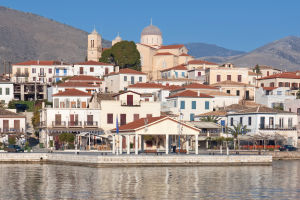Nestled among the serene waters of Sweden's west coast lies the idyllic Fjällbacka Archipelago, a cluster of islands rich in natural beauty and maritime history.
One of the standout features of this region is the Fjällbacka Lighthouse, a beacon that has guided sailors for centuries.
The lighthouse, perched atop a rocky islet, is not just a sight to behold but also a fascinating destination for travelers seeking both adventure and tranquility.
Getting There
The easiest way to explore the Fjällbacka Archipelago and visit the lighthouse is by ferry or boat. Ferries run regularly from the mainland, with Fjällbacka being the nearest town. For those who enjoy a more active adventure, kayak rentals are available for an up-close exploration of the rocky coastlines and hidden coves.
Ferry Price: Around 80-120 SEK (Swedish Krona) for a round trip.
Open Time: Ferries operate year-round, but summer (June-August) is the best time to visit due to calmer seas and warmer weather.
Travel Time: The ferry ride to the archipelago takes approximately 30 minutes from Fjällbacka.
What to Do
Upon arrival, the lighthouse is the main attraction, standing tall as a testament to Sweden’s maritime history. Visitors can enjoy the breathtaking views of the surrounding waters and islands, a perfect backdrop for photography or simply soaking in the peaceful atmosphere.
Entry Fee: Free, but guided tours may be available in summer for around 50 SEK per person.
Best Time to Visit: Late afternoon, just before sunset, for stunning golden-hour views.
For adventurers, the surrounding islands are a haven for hiking. Many trails lead to panoramic vistas where one can enjoy the full beauty of the archipelago. Wildlife enthusiasts may also spot seals basking on the rocks or seabirds soaring overhead.
History of the Lighthouse
The Fjällbacka Lighthouse has been operational for over 150 years, guiding vessels through these tricky waters. Once manned by local keepers, it now operates automatically, a symbol of the region’s rich connection to the sea. The surrounding archipelago was historically a major fishing hub, and remnants of this history can still be found in the small fishing villages dotting the islands.
Where to Stay and Eat
After a day exploring the islands, head back to Fjällbacka for a relaxing evening. This picturesque town offers a range of accommodations, from cozy cottages to guesthouses.
Accommodations: Expect to pay around 800-1500 SEK per night for a comfortable stay in town.
Local Cuisine: Don’t miss out on the fresh seafood, especially the locally caught herring and shrimp dishes, often served at waterfront restaurants.
Tips for Lykkers
For Lykkers looking to explore this peaceful and historic site, here are some handy tips:
Dress Appropriately: Even in summer, the weather can change quickly, so bring layers and a waterproof jacket.
Respect the Environment: The archipelago is a protected area, so ensure that you follow local guidelines for responsible tourism, including disposing of waste properly and avoiding disturbance to wildlife.
Time Your Visit: Summer is the most popular time to visit, but if you prefer fewer crowds, consider visiting in May or September when the weather is still pleasant.
Conclusion
The Fjällbacka Lighthouse and its surrounding archipelago offer a magical escape for those looking to experience Sweden’s coastal beauty. Whether traveling by ferry, hiking the rugged landscapes, or simply basking in the serenity of the lighthouse’s presence, this destination promises an unforgettable adventure for all Lykkers seeking both nature and history.


